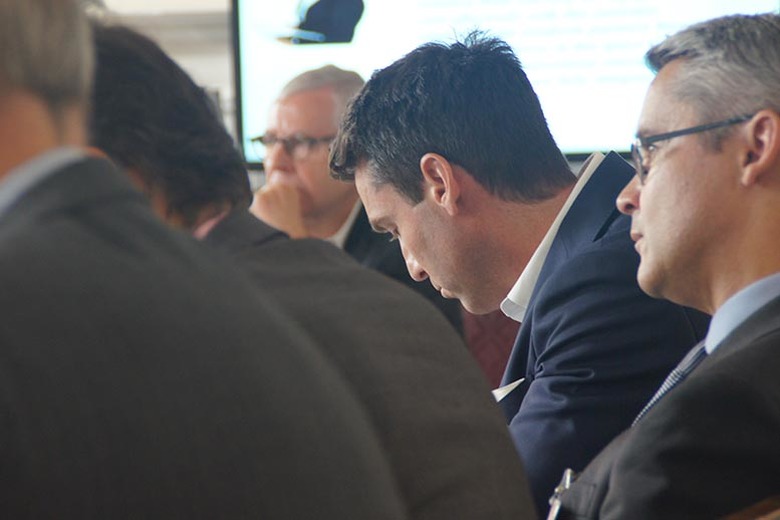
Expert: Mark Dowding, Bluebay Asset Management
Headlines
- Managers need to develop skills and identify opportunities through proprietary research and process to achieve alpha.
- It is becoming increasingly difficult to realise strong returns from consensus trades.
- Historical trends in Eurozone bonds have returned 6.5% on an annualised basis over the past 20 years.
- In the corporate bond market liquidity has all but disappeared with investors seeking out the alternative sub asset class with fixed income like features.
Key themes
Is there still value in the bond market?
In the current climate with a large proportion of government bonds now yielding less than 1% and the consequent impact on credit yield means that portfolio managers are buying bonds on behalf of clients but they can virtually guarantee that they will be losing money, whilst charging a management fee. Does this define a broken asset class? As one member of the table pointed out – the past 20 years of performance will likely determine the next 20 years. As a European investor over the last two decades, individuals will have achieved 6.5% in annualised returns.
“The beta in fixed income markets doesn’t look as attractive as it once was. Investors have eaten their lunch for the next 7 years, in one go”
Quantitative Easing (QE) combined with the search for yield by investors has created a contraction in risk premium. QE has extracted returns by exploiting premium in fixed income markets and these cannot now be relied on to deliver consistent future returns. Although it is tempting to continue to try to extract returns from beta by lowering costs e.g. indexing, this can lead to unintended outcomes, notably that fixed income index constituents are weighted by issuance. This exhaustion of beta is pushing investors towards alternative asset classes with fixed income like features – property, infrastructure and direct lending. However “there has never been more debt in the world than today” – meaning the fixed income asset class is still relevant.
“In order to extract alpha, it now requires the right opportunity and the right manager’s skill. Active management is crucial; passive fixed income investments are possibly the worst things to hold at the moment”
Whilst the opportunity set is narrowing, there are a number of aspects that would allow client portfolios continue to achieve alpha. Ensuring investors follow an absolute return strategy, focussing on alpha rather than beta, that managers are ready to adopt non consensus views and that the investment process is robust, risk weighted and offering non-correlated returns.
“If the industry goes into a vortex – yields will become flat, but volatility breeds advantages and opportunities.”
Discussion around the table inevitably circled on the decisive factors that will determine future volatility. At the forefront is the EU referendum, continued central bank QE, market liquidity, wider political trends such as the populist vote and macroeconomic risks such as Japan’s ageing population and China’s debt bubble.
Conclusions
These risk inducing factors combined with a host of different financial instruments, currencies and issuers ensure fixed income markets remain inefficient. For investors to stay ahead it was proposed that a portfolio manager’s ‘investment edge’ utilises proprietary research and process to identify useful insights for client portfolios.
In one final concluding remark a delegate summarised the discussion neatly:
“The perfect landscape is fast changing around us – although investors should continue to fix their portfolios.”



